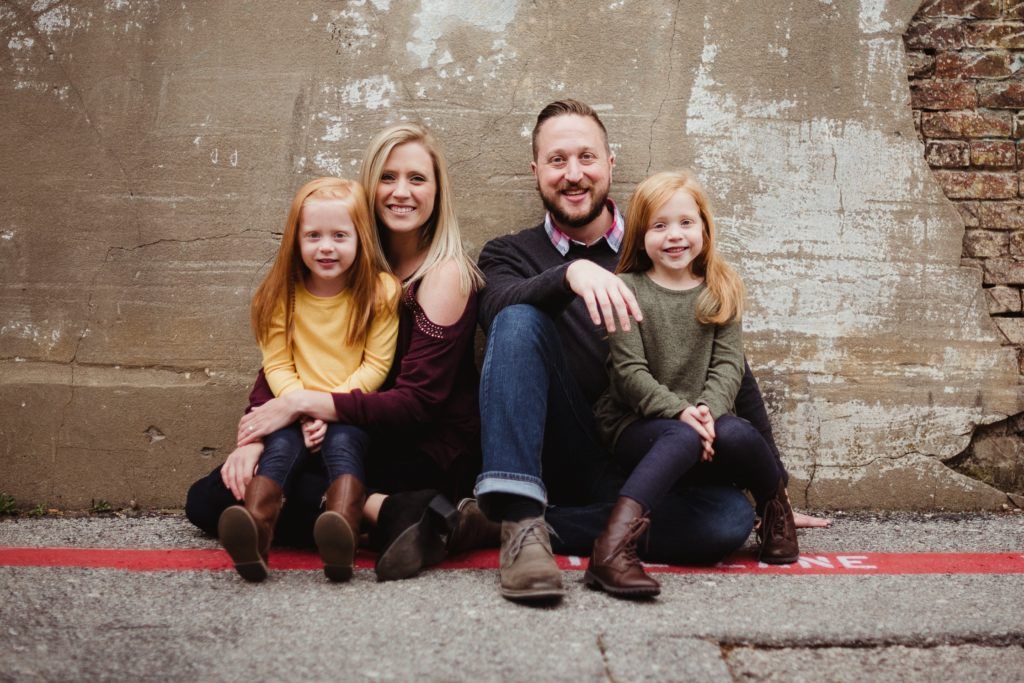
Adam Wood serves as the lead pastor at The Neighborhood Church in Garland, TX. A native to the Dallas area, Adam served as a worship leader and young adult pastor before joining the community that would re-plant as TNC in 2016. Adam loves music, the Dallas Mavericks, nights out with his wife Amy, and dance parties at home with his two red-headed daughters.
How would you describe the area your church is in?
Garland is a large suburb just to the northeast of Dallas and TNC is smack dab in the middle of it. Our area can be described by a lot of “Multi’s” — multi-ethnic, multi-socioeconomic, and multi-generational. We do most of our community engagement and relationship-building in and around an ecumenical community center situated in the middle of a dozen different low-income apartment complexes.
How would you describe the journey of pastoring the Neighborhood Church? What have been some of the milestones/different seasons?
The Neighborhood Church relocated and re-planted with a core team that had a strong sense of who we were called to BE before we ever determined what we were called to DO as God’s people together. That season of discerning our identity — of a “being” that precedes “doing” — almost directly parallels my own journey as a pastor.
Like many church plants, we built TNC with wet cement. Our identity, place, and core convictions are a strong foundation that also gives us just enough flexibility to figure things out as we go. But “going” out into the neighborhood together was a vital shift in our early days. If we were ever going to live up to our name, we had to get out into the neighborhood. The wet cement of how we do what we do has taken different shapes in these 3 years. We’ve hosted block parties, picnics, movie nights, VBS for neighborhood kids at a community center and we’ve made significant partnerships with two of the largest homeless ministries in Dallas. Most significant, however, is our Neighborhood Clothes Closet. By offering free clothes, shoes, and toiletries we’ve been able to pray with and build relationships with over 250 families in our community.
Ultimately, we’re just trying to follow Jesus together for God’s kingdom in our neighborhood. What I’ve discovered is that cultivating a Jesus-centered culture of embrace, transformation, and mission takes time (especially in the land of consumerism and mega churches). We are really good at raising money to support our kingdom partnerships or to start kingdom experiments. Now we’re in a season of learning the slow work of building a kingdom presence and a kingdom community.
Looking back, what do you know now you wish you had known when you first started the Neighborhood Church?
That it is NOT all up to me! The church’s vitality is not solely contingent upon my preaching, my leadership, my guidance, or my amazing ideas. Because our church was moving through significant transitions and toward an eventual re-plant, I believed the lie that it was up to me to fix it, build it, and hold it all together.
Every time I’d sit with Jesus I’d be reminded of my identity as a beloved son of the Father’s… but then I’d stand up, walk away, and try to earn it. God used that time to remind me that 1.) I’m not alone and 2.) He’s always working. It took some time for that to sink in.
As you think about what you’ve been able to do so far in ministry there what are some things you have done/tried that have worked well?
We launched a Neighborhood Clothes Closet that has provided clothes and toiletries to more than 250 families and school uniforms for almost 200 children. Really, though, it’s about the slow work of building relationships, praying with our neighbors, and seeing God’s kingdom come in unexpected ways.
We’ve seen physical and relational healing. We’ve seen lonely neighbors find a friend. We’ve seen new Christians in our church catch a fire for loving their neighbors as themselves despite socioeconomic or ethnic differences. After 2 years, however, we’re still asking the question, “How can we become more effective in helping our neighbors become part of God’s family?”
What hasn’t worked so well? What have you had to rethink/reimagine/rework?
What hasn’t worked well is the move from serving our community to incorporating our community into the life of the church. We thought it was because our neighbors we met at the Clothes Closet or VBS just needed a ride to our worship gathering. What we’ve seen so far is a lot of interest that have translated to only a few visits.
I think Verlon Fosner of the Dinner Church movement is right when he says that our churches have a sociological problem. Are our worship gatherings hospitable to all people and not just young, white, middle class Christians? Is our church building hospitable to seekers? Are our worship gatherings really the best “front door” to our church?
In an effort to re-imagine the expectation that “they” should take a step toward “us” — we’re trying to take a step toward our neighbors by creating space for relationships to grow in our shared space within the neighborhood. This Fall we plan to launch our own expression of a Dinner Church we’re calling The Neighborhood Table. We started with the relationships we’ve already formed through the Clothes Closet and we’re excited to break bread together and see where God takes us.
What is one failure you experienced and what did you learn from it?
When I became the primary preacher in what would become The Neighborhood Church, I doubled the amount of sermons I had ever preached in only four months’ time. We were in a season of transition and I had placed some unrealistic expectations on myself. I thought I had to preach my way into becoming a vibrant church and pastor. I soon found that I couldn’t sustain my unhealthy rhythm of work and rest, nor could I live up to the emotional, spiritual, and functional qualities I had judged myself on.
All of this led to a panic attack moments before I was going to preach one day. So there I stood on stage in a very awkward and pregnant silence, unable to speak with all the anxieties still swirling in my head. Eventually, I said I’d pray and that we would just sing again. (Of course, that’s the service we had a guest worship leader!) That’s when someone said, “No, we’re going to pray for you.” Our community surrounded me and as they laid hands on me, the idol of self-reliance began to crumble.
I’m still learning to create space for healthy disengagement. I’m still learning to follow Jesus’ rhythm of work and rest. I’m still learning to let go of the unrealistic expectations I put on myself and others.
What is something you’ve been hearing from or learning from God in this last season of leading?
The phrase “Give me an undivided heart to revere your name” from Psalm 86.11 has been echoing in the back of my head for the better part of a year. God is continually inviting me to stillness, rest, and contemplation to allow him to put the disparate pieces of my life into something that is both holistic and wholly his.
What do you dream/hope/pray the Neighborhood Church looks like in five years?
My hope is that we would become a life-giving church in the neighborhood that would one day reflect the neighborhood in all its diversity as we follow Jesus together. Basically, we want to live up to our name as we invite all people into life with Jesus in the kingdom of God.







